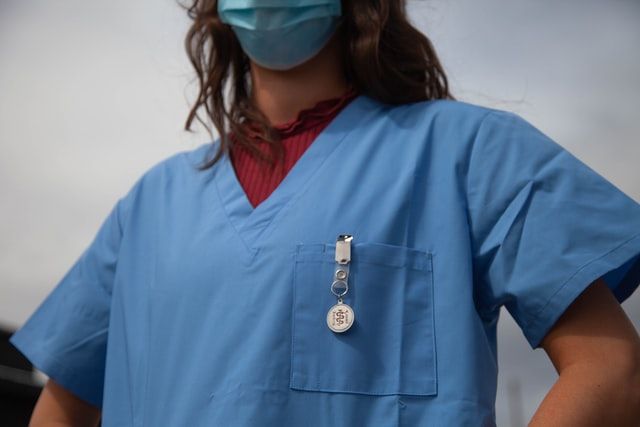
The Nurses Strike in New York City and Public Health Implications
Complaints of staff shortages, spending cuts, and compromised working conditions in the nursing profession are not new. However, the COVID-19 pandemic and the rise of contagious infections have compounded the current strain on hospitals and other facilities.
The three-day nurses’ strike in New York City last January was just one of many recent labor struggles in the healthcare sector. The increase in nursing strikes has raised concerns about the effects of work stoppages on patients, hospitals, and health systems. Here is a recap of the strike and its impacts on nursing and public health moving forward.
The New York City Nurse Strike
Late last year, 17,000 members of the New York State Nurses Association (NYSNA) spent several months trying to negotiate their contract. New York City nurses had already been sounding the alarm of staffing shortages. They diminished working conditions in the face of the increasing triple threat of COVID-19, influenza, and respiratory syncytial virus (RSV). Additionally, the decision by Mayor Eric Adams to forcibly hospitalize psychiatric patients reportedly put additional strains on workloads, job satisfaction, and mental well-being.
During negotiations, NYSNA claimed that proposed contracts from management reduced their healthcare benefits. With union contracts expiring by December 31, NYSNA members started voting on whether to call a strike if they could not reach agreements with management. By December 30, almost 99% of members voted in favor of striking. On January 9, about 7,000 nurses at Mount Sinai Health System and Montefiore Health System voted to walk out and take their places on the picket line.
On the morning of January 9, several NYC hospitals prepared for the walkouts and went into anticipatory crisis mode. During a strike that lasted three days, the hospitals stayed open and relied on temporary staffing services to fill the labor gaps. They also assigned non-nursing duties to other employees.
The hospitals also outlined additional steps to ensure continuity of care and services, such as diverting ambulances and transferring some patients—including NICU babies—to other care facilities. The hospitals affected by the strikes also canceled elective surgeries and procedures, discharged some patients, and shifted some of their services.
On January 12, just three days after the walk-out began, the striking nurses agreed to ratify the new contract. One of the biggest wins out of negotiations was the provision of enforceable “safe staffing ratios” at both Mount Sinai and Montefiore. The nurses also won pay increases, which the unions and management mostly agreed on before the strike began.
Negotiations also resulted in an agreement by management to pay penalties for failing to comply with the established staffing levels, which include 170 new positions for nurses. Montefiore also agreed to a 19% pay increase over the next three years, lifetime health coverage for retiring nurses, and the addition of “significantly more nurses” in the emergency department.
Impacts of the NYC Nurses Strike
The nurses' strike of January 9-12 was one of many that occurred throughout the United States. last year. In the wake of the COVID-19 surge, these and other similar events have cast light on nurse shortages, heavy workloads, and burnout resulting from strains on hospitals that are already overburdened. Add to that the low numbers of nursing faculty equipped to train professionals to continually feed the nursing pipeline.
Last year, 32,000 nurses from six unions went on strike, representing an increase in major strikes from the previous year. If decreased staffing, the lack of good retention plans, and significant spending cuts persist, healthcare providers and experts across the country predict additional work stoppages. They also warn that strikes can happen anywhere in the country, with at least two more in California likely to occur this year.
Strikes involving nurses and other essential healthcare providers can have rippling effects on surrounding hospitals and the greater healthcare infrastructure. Until enough new nurses enter the workforce to replace those who quit or retire, communities must prepare for work stoppages so that individuals and families needing emergency and other forms of care can still receive it.
Hospitals and other care facilities should identify pressing needs and outline potential scenarios to enable appropriate response plans during a strike. Hospitals should prioritize patient safety and maintain patient-to-staff ratios as much as possible.
Other agencies and organizations that are part of local health infrastructures should have procedures in place. For example, anticipating the January 9 New York City walk-outs, the New York City Office of Emergency Management accelerated its crisis planning and coordination efforts. The agency established an interagency center to monitor citywide hospital operations and direct and reroute ambulances.
Research and materials for this article were compiled, written, and distributed on behalf of the National Public Health Information Coalition. The views and opinions expressed in this blog are those of the various authors and do not necessarily reflect the official policy or position of the National Public Health Information Coalition or its members.
References
https://pix11.com/news/local-news/nyc-nurses-may-soon-strike-authorization-vote-nearing-end/
https://www.cnn.com/2023/01/12/business/nyc-nurses-strike-ends/index.html
https://www.aacnnursing.org/news-information/fact-sheets/nursing-faculty-shortage
https://www.politico.com/news/2023/01/06/new-york-city-nurses-strike-00076847

